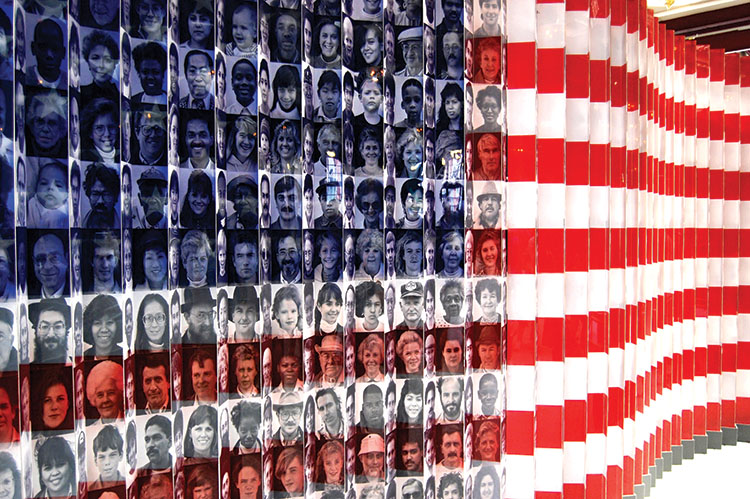NOTE: THIS SYLLABUS IS PROVIDED IN ADVANCE OF THE SPRING SEMESTER TO LET STUDENTS GET AN IDEA OF THE COURSE; READINGS ARE LISTED, BUT THE LINKS TO ELECTRONIC BOOKS AND ARTICLES ARE NOT YET LIVE. ONCE THE COURSE BEGINS THIS SYLLABUS WILL BE AVAILABLE TO REGISTERED STUDENTS ON CANVAS AND ALL LINKS WILL BE LIVE. FEEL FREE TO CONTACT PROF. GOLDSTEIN at egoldst [at] emory [dot] edu WITH ANY QUESTIONS ABOUT THE COURSE.
Spring 2022

Prof. Eric L. Goldstein
egoldst [at] emory [dot] edu
Class meets: Thursday, 9:00am-12:00pm, Callaway Center N204
Office location: Callaway Center N222 (hours by appt.)
This course will explore the major themes in the field of U.S. cultural history, including both foundational texts and more recent works of influence. In surveying the field, it will introduce students to various interpretive theories-many of which originate outside the discipline of history-that are now regularly employed in the analysis of historical texts and discourses. Emphasis will be placed on using cultural approaches to understand how social relations in the United States from the colonial era to the present have been informed by racial, ethnic, gender, and class identities. Among the cultural arenas we will explore and interpret in depth are print culture, mass or “popular” culture, consumer culture, religious culture, cultural hierarchy, landscapes, and the built environment. Although the course focuses on U.S. history, students interested in other parts of the world will find many of its theoretical and methodological insights applicable to their own fields of study.
TEXTS TO PURCHASE:
Most of the readings for this course are available online as ebooks or as articles that the instructor will link to the syllabus. The following three texts are not available in electronic format and should be purchased. Students may purchase these from any bookseller and may find used copies online at outlets such as abebooks.com. However, copies can also be purchased at the Emory (Barnes and Noble) Bookstore:
Ann Douglas, The Feminization of American Culture (New York: Farar, Straus, and Giroux, 1977, 1998).
David Roediger, Working Toward Whiteness: How America’s Immigrants
Became White (New York: Basic Books, 2006).
Michael Warner, The Letters of the Republic: Publication and the Public
Sphere in Eighteenth-Century America (Cambridge, MA: Harvard
University Press, 1992).
BOOKS AND ARTICLES AVAILABLE ONLINE:
The following texts can be accessed online as ebooks through Emory’s Woodruff Library (see the Course Schedule page for links).
Rhys Isaac, The Transformation of Virginia, 1740-1790 (Chapel Hill:
University of North Carolina Press, 1982, 1999).
Lawrence Levine, Black Culture and Black Consciousness:
Afro-American Folk Thought From Slavery to Freedom, rev. ed (New
York: Oxford University Press, 2007).
Lawrence Levine, Highbrow/Lowbrow: The Emergence of Cultural
Hierarchy in America (Cambridge, MA: Harvard University Press,
1990).
George Lipsitz, Time Passages: Collective Memory and American
Popular Culture (Minneapolis: University of Minnesota Press,
1990).
Robert Orsi, The Madonna of 115th Street Faith and Community in
Italian Harlem, 2nd edition (New Haven: Yale University Press,
2002).
Cathy Peiss, Cheap Amusements: Working Women and Leisure in
Turn-of-the-Century New York (Philadelphia: Temple University
Press, 1986).
There are also several articles and book chapters that are in pdf. format. Links to all these resources are provided on the Course Schedule page.
COURSE REQUIREMENTS AND GRADING:
The course will require substantial reading and meaningful participation in weekly discussions. In addition, students will be required to help set the agenda by writing some discussion questions for each class, as well as complete two written assignments.
“Agenda Setting”:
In order to help you zero in on the main points of each set of readings, students will be asked to write five questions each week that they think focus on and distill the main scholarly points of the books and articles. If there are multiple readings, it is helpful if some of the questions focus on the differences and points of connection between the various readings. We will start class each week by asking what questions you have brought to the table.
Short Paper:
The first paper is a 5-7 page review of one set of readings, to be chosen in consultation with the professor and preferably outside the student’s area of specialization. Papers should place the works in a historiographical and/or methodological context and critique their main points, assumptions, and conclusions. In the case of multiple authors, students should identify the main points of agreement and disagreement between them. So you may have the benefit of the class discussion on the readings you choose, this paper is due the week after the readings are discussed.
Term Project:
The second paper is a 15-20 page close analysis of one or more primary sources in which students put into practice one of the interpretive approaches we have discussed in class.
Your grades will be determined as follows:
Class participation, 25%
First essay, 25%
Second essay, 40%
Agenda setting/weekly class preparation, 10%